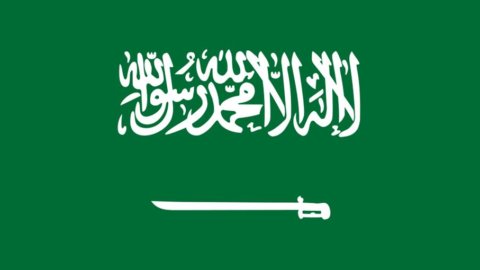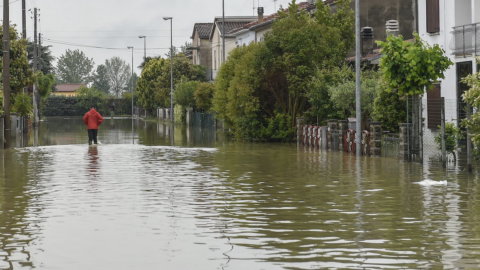La political situation dell'Saudta Arabia seems to be stable. On January 23, King Abdullah died (he had been in office for 10 years) and was succeeded by his half-brother Prince Salman. As a first act, Salman changed the men of government and designated another half-brother, Prince Muqrin, as his heir. The power of the Saud dynasty appears solid. The situation in the Middle East does not cause particular concern, Saudi Arabia has, since the beginning, assumed the role of political-religious leader of the Islamic world of Sunni inspiration. Financial support is presented as a primary tool in the management of foreign policy by the Saudi government.
La economic situation, according to a report by the Intesa Sanpaolo research service, presents a GDP preliminary 2014 to 3,6%. In detail, hydrocarbon extraction activities register a growth of 1%, while refining registers + 12,1% (although in 2013 the weight of these activities on the GDP was 2,9%); non-hydrocarbon activities slowed down from +6,4% in 2013 to +5,1% in 2014. The slowdown innon-hydrocarbon area it is mainly attributable to the real estate financial sector (+4,5% vs. +9,2% in 2013). At an aggregate level, the large and sharp drop in the price of hydrocarbons could have a negative effect on the propensity to consume in the private sector . However, the substantial financial reserves accumulated allow the Government to pursue an expansive fiscal policy, capable of balancing the likely lower growth in private demand.
According to Thomson Reuters forecasts, the non-hydrocarbon sector will grow by 2015% in 2016 and 4,5. For the hydrocarbon sector, the authorities have also recently reiterated that they do not intend to cut the quantities extracted in order to boost prices, therefore the forecasts are for 0 growth. For the next two years, GDP forecasts therefore stand at around 3% per annum.
The trend rate ofinflation it closed 2014 at 3%. The average rate fell to 2,7% in 2014 from 3,5% in 2013. This easing of inflationary pressures was driven by falling transportation and communication costs, which more than offset increases in recreation and culture ( +7,2%), durable goods for the home (+4,3%) and tobacco (+6%). The two categories that have a greater weight in the index – food-beverage (with a weight equal to 26%) and housing costs (with a weight equal to 18%) – recorded an increase of 3,3% and 3,4%, respectively. The exchange regime fixed with the dollar constrains monetary policy. The interest rate corridor, delimited by the repo rate (equal to 2%) and the reverse repo rate (at the level of 0,25%) has remained unchanged since 2009. In this period, the Authorities limited themselves to absorbing the excess liquidity created by the growth of public expenditure financed with receipts from oil, with issues of Treasury bills and with reverse repo operations. Since 1986, the Saudi riyal has been pegged to the US dollar at a fixed exchange rate of 3,75 riyals to the dollar.
During 2014, the real effective exchange rate (REER) appreciated by 8%. Saudi Arabia will host the central bodies of the Monetary Union of the Gulf countries, to which, in addition to Saudi Arabia, Bahrain, Kuwait and Qatar. However, the project has been frozen for some time and a precise starting date for the Monetary Union has not yet been defined.The public debt/GDP ratio is modest: 9,8% in 2014
La balance of payments of Saudi Arabia records a large current surplus (on average equal to 20% of GDP in the last 10 years) largely due to commercial transactions, while the financial account shows a structural deficit determined by investments abroad by residents. As of June 2014, Saudi Arabia had a large active net international financial position (NFP) of $821 billion (109,9% of GDP).
Saudi Arabia, given the large stock of financial resources set aside, the low public debt and the substantial surpluses of the State and of the current account of the balance of payments, does not seem to give rise to concerns regarding solvency. However, last December, S&P confirming the AA- rating changed the outlook from positive to stable, underlining the risks entailed by the drop in oil prices.
In recent years, the major reforms have concerned, among others:
– Privatizations (see the first placement of the telecommunications company STC followed by that of the main insurance company in the Arab world NCCI)
– customs union between the economies of the Gulf (2003)
– modernization of the legal and insurance system (2003)
– accession to the WTO (2005)
– licenses and capital market activities, brokerage and insurance (2006-07)
Since 2012, foreign companies can be listed on the Tadawul Stock Exchange
I major investment projects ongoing in the industrial sector concern all activities with high energy consumption: specifically, oil-fired power plants and desalination plants, petrochemical plants and for the production of aluminum. Saudi Arabia is, together with China, one of the countries with the highest growth in hydrocarbon demand.
The lack of infrastructure and housing units highlights a certain difficulty in spending oil wealth.





